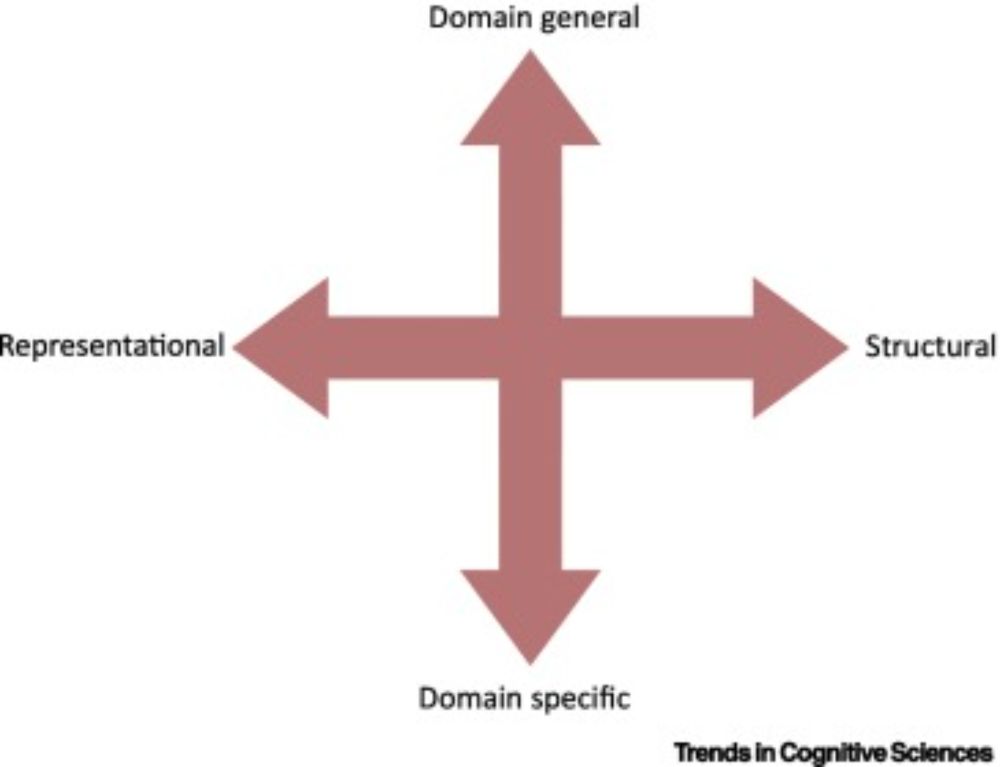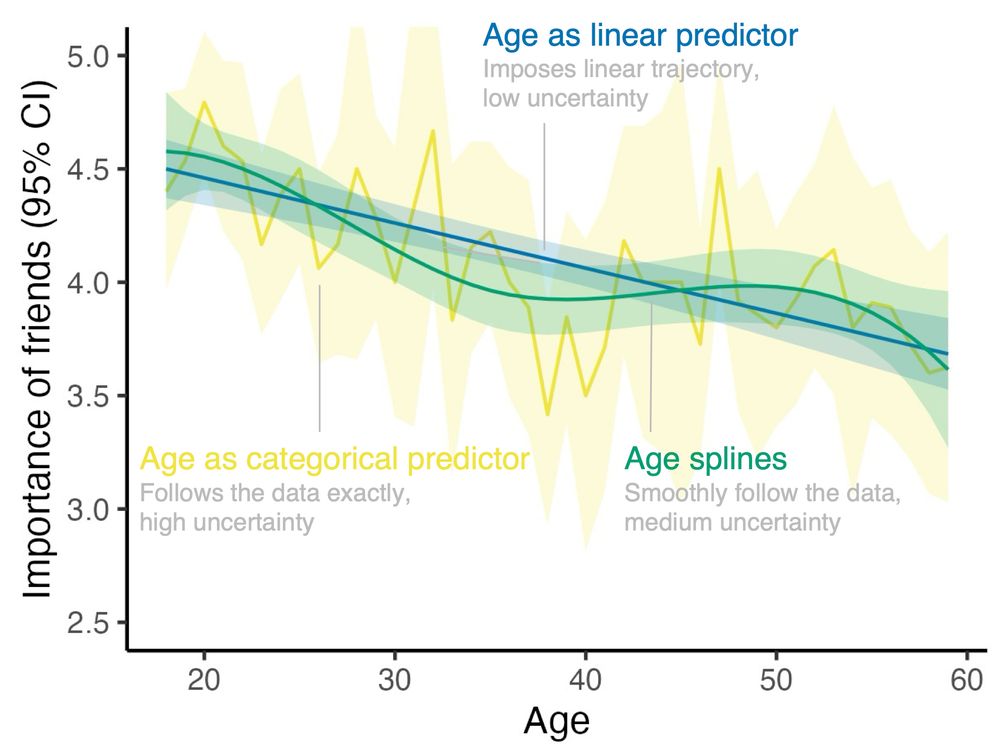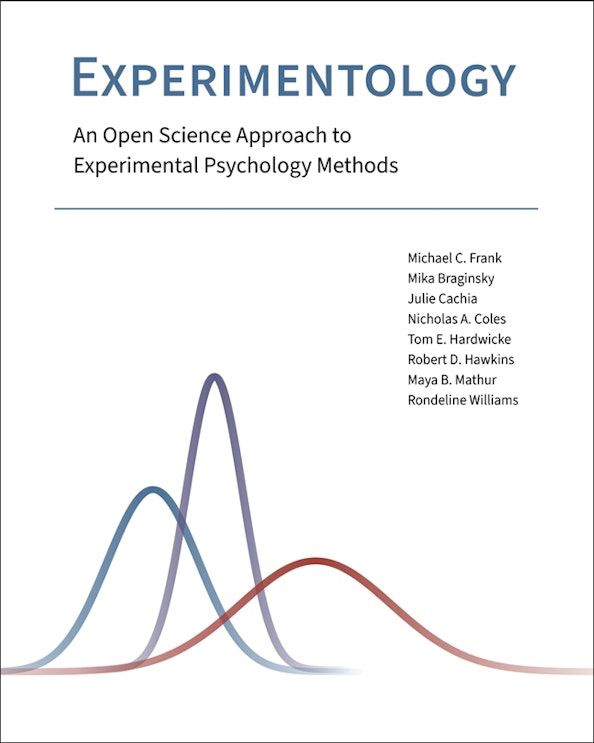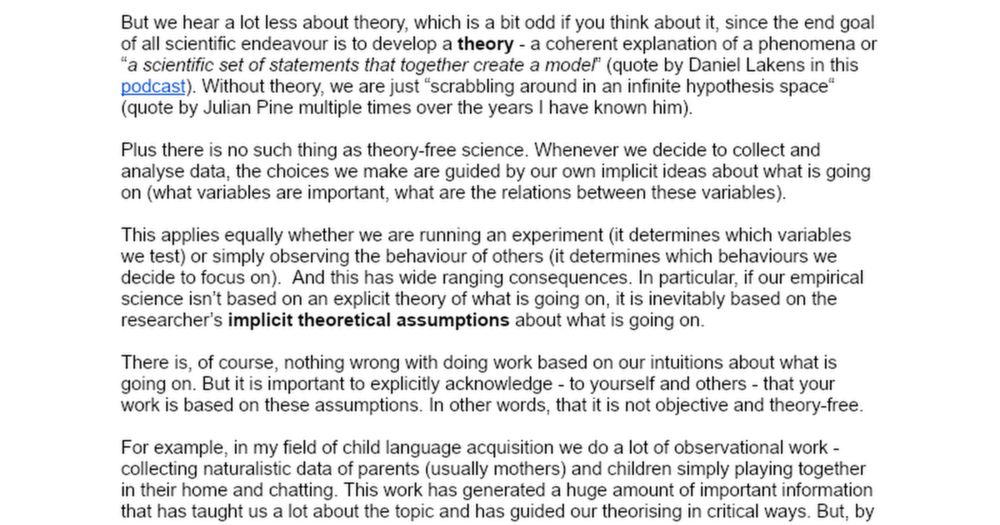YouTube video by Wim Pouw
EnvisionBOX overview2025
www.envisionbox.org has been shortlisted for the Leo Waaijers Open Science price: ukb.nl/en/news/shor...
@babajideowoyele.bsky.social @jamestrujillo.bsky.social @sarkadava.bsky.social @DavideAhmar @acwiek.bsky.social
Amazing Markus Küpper made an animated video:
www.youtube.com/watch?v=HduI...
02.10.2025 12:28 — 👍 18 🔁 11 💬 2 📌 2
Some of the popular chain restaurant recommendations: Sushiro, Kurasushi, Tsurutontan (udon noodles), Ohtoya (Japanese), Yayoi Ken (Japanese), Gyoza no Ohsho (Chinese), Coco curry. Hope you enjoy Japan!!
18.09.2025 14:23 — 👍 1 🔁 0 💬 1 📌 0
You are right. That's why I'm trying to develop a good understanding so that I can make my judgments! And your summer school really helped me understand stats better :)
17.08.2025 16:17 — 👍 0 🔁 0 💬 0 📌 0
I think it’d be a great addition! Especially because I saw recommendations against using BF due to its sensitivity to priors, so instead using CI or HDI for NHST. That’s why I got confused when I read the statement in your book. I’ll read more papers/books and try to get a full understanding on this
17.08.2025 13:20 — 👍 0 🔁 0 💬 1 📌 0
Thank you so much for all the recommended readings!!!
17.08.2025 12:23 — 👍 0 🔁 0 💬 1 📌 0
Thank you so much for the elaborate answer! It was very informative!!
15.08.2025 11:13 — 👍 0 🔁 0 💬 2 📌 0

The physical book copies have arrived: www.routledge.com/Introduction...
14.08.2025 15:28 — 👍 17 🔁 3 💬 0 📌 0
I'm currently reading the paper. Thanks a lot for your suggestion!
14.08.2025 16:05 — 👍 0 🔁 0 💬 0 📌 0
Thank you for the response! I think one should reject the null in case 1 and fail to reject in case 2, although "0.0000001" is a tiny diff. I see the point here, but doesn't this issue apply to any discrete decisions based on continuous measures? Or would this be less of a problem for Bayes factor?
14.08.2025 16:05 — 👍 0 🔁 0 💬 1 📌 0
@bruno-nicenboim.fediscience.org.ap.brid.gy , @shravanvasishth.bsky.social #bayesian, #stats
13.08.2025 09:25 — 👍 0 🔁 0 💬 1 📌 0
Please help me learn! I see people using CI for hypothesis testing (whether 95% CIs for slope cover 0), but Nicenboim, Schad &Vasishth say in their fantastic book that "just by looking at the [CIs], we cannot make inferences about whether a null hypothesis can be rejected". Why is this the case?
13.08.2025 09:24 — 👍 3 🔁 0 💬 2 📌 0
Our conversation analysis software is now on CRAN! Reach out with any questions. We hope it’s useful for all you language and social interaction folks out there.
22.07.2025 18:44 — 👍 39 🔁 15 💬 2 📌 0

Constructing language: a framework for explaining acquisition
Explaining how children build a language system is a central goal of research in language
acquisition, with broad implications for language evolution, adult language processing,
and artificial intelli...
Children are incredible language learning machines. But how do they do it? Our latest paper, just published in TICS, synthesizes decades of evidence to propose four components that must be built into any theory of how children learn language. 1/
www.cell.com/trends/cogni... @mpi-nl.bsky.social
27.06.2025 05:19 — 👍 151 🔁 58 💬 8 📌 12
I see, good to know! I’ll try segmented regression and splines and see which one makes more sense for my data ;)
16.07.2025 17:02 — 👍 1 🔁 0 💬 0 📌 0
Yes, that’s exactly what I had in mind! Didn’t know that they are called segmented regression. Thanks for your reply😊
16.07.2025 16:49 — 👍 1 🔁 0 💬 1 📌 0
At this point, I might as well --
Here's an infographic showing different ways to include age as a predictor. The top shows two extremes, just as a plain old numerical predictor (imposes linear trajectory) vs. categorical predictor (imposes nothing whatsoever). And then three solutions in between!
16.07.2025 12:33 — 👍 211 🔁 47 💬 22 📌 1
This is amazing!!! Would it also make sense to model age as a continuous predictor within different age bins? So instead of getting one point estimate (flat line) for the in-between solution, we would fit a regression line in each binned age so that the flat lines will follow the date better?
16.07.2025 16:24 — 👍 1 🔁 0 💬 1 📌 0
Thanks a lot, Martha!!
12.07.2025 10:35 — 👍 0 🔁 0 💬 0 📌 0
Sho presents his work validating dynamic time warping to a rapt #ISGS2025 audience. Lots of engagement afterwards #ProudSupervisor
11.07.2025 14:10 — 👍 18 🔁 1 💬 2 📌 0
OSF
If you can't attend the talk but are interested in the work, we have a preprint available!!
osf.io/preprints/ps...
11.07.2025 09:25 — 👍 2 🔁 0 💬 0 📌 0
This is a collaborative work with
@dingemansemark.bsky.social and @asliozyurek.bsky.social 🙌
11.07.2025 09:25 — 👍 1 🔁 0 💬 0 📌 0
Are you at #ISGS2025 today? Come see my talk in the kinematics session! I'll present my PhD work validating dynamic time warping (DTW) as a measure of gesture form similarity with manual ratings. We show that DTW can be an efficient, useful proxy for gesture form similarity!
11.07.2025 09:24 — 👍 11 🔁 3 💬 3 📌 1

Excited to present at ISGS25 this Thursday morning in Nijmegen!
Together with @shariceclough.bsky.social , we’ll be sharing our work on the role of gesture in narrative recall across Alzheimer’s, MCI, and healthy aging.
Looking forward to great discussions! 💪🏻🧠🗣️
#ISGS25
09.07.2025 12:45 — 👍 1 🔁 1 💬 0 📌 0

Plot that depicts the average importance people in my data assign to their friendships (y-axis, on a scale from 1 to 5, depicted with 95% confidence intervals) by their age (x-axis, from 18 to 60).
Depicted are 3 different ways to model importance of friends as a function of age.
Using age as a linear predictor: this imposes a linear trajectory which comes with very tight confidence intervals (i.e., uncertainty is low).
Using age as a categorical predictor: this imposes no trajectory whatsoever but instead simply reproduces the means by age. The confidence intervals are very wide, in particular for those ages not well represented in the data (i.e., uncertainty is high).
Age splines: This results in a smooth trajectory that follows some of the bumps in the data, but not all of them. The confidence intervals are somewhere between the linear and the categorical case (i.e., uncertainty is medium)
Let's say you want to include age as a predictor in your model. How do you do that?
Here's an illustration of three options -- it's for a paper I'm working on (so if you feel like anything could be tweaked...).
08.07.2025 12:03 — 👍 160 🔁 31 💬 33 📌 2

Aerial photograph of Radboud University campus with the Erasmus tower in the foreground: tallest building in Nijmegen & home to the Futures of Language project. Source: RU
We're hiring! Join us to work at the intersection of social interaction and language technology. Postdoc and PhD positions in my Futures of Language research group, based at Radboud University in Nijmegen, NL
Read more: markdingemanse.net/futures/news...
#linguistics #interaction #sts #emca #hci
07.07.2025 11:43 — 👍 88 🔁 67 💬 1 📌 1

Experimentology cover: title and curves for distributions.
Experimentology is out today!!! A group of us wrote a free online textbook for experimental methods, available at experimentology.io - the idea was to integrate open science into all aspects of the experimental workflow from planning to design, analysis, and writing.
01.07.2025 18:25 — 👍 534 🔁 228 💬 10 📌 15

`
Towards a More Inclusive and Culturally Diversified Cognitive Science
Cognitive science is an interdisciplinary field that seeks to understand the nature and mechanisms of intelligence—whether biologi...
📣 Calling early-career cognitive scientists in the Asia-Pacific!
The CogSci Asia-Pacific Meetup Kickoff is coming:
📍 Dec 6–7, 2025 | Tokyo
🌱 Retreat-style event, community building, and cross-cultural exchange.
Details: sites.google.com/view/cogsci-...
#CogSci2025 #CognitiveScience
30.06.2025 12:47 — 👍 7 🔁 4 💬 0 📌 2
We rate DAGs.
(If you were hoping for dogs, try here: @weratedogs.com)
PhD student at KU Leuven (MIDI)
Interests: multimodality, embodiment, semiosis
(they/he) 🏳️🌈
PhD student at the University of Granada 🧠
Experimental Psychology | Cognitive Neuroscience | Language | Embodied Cognition | TMS | Metascience.
Clinical psychology researcher | applied statistics geek | so called #RStats influencer
Cognitive science journal published by MIT Press.
https://direct.mit.edu/opmi
Mexican Historian & Philosopher of Biology • Postdoctoral Fellow at @theramseylab.bsky.social (@clpskuleuven.bsky.social) • Book Reviews Editor for @jgps.bsky.social • #PhilSci #HistSci #philsky • Escribo y edito • https://www.alejandrofabregastejeda.com
Evolutionary ecologist and open science advocate. Interested in social evolution, population dynamics, statistics, and open science. Parent x2. Incompetent but enthusiastic naturalist
Professor of Technology and Economic Policy | Co-founder of causalscience.org | Associate Editor at Journal of Causal Inference | Executive Team at Academy of Management TIM Division
PhD student at University of Bologna @abstractionerc.bsky.social
Research: how linguistic system enhances conceptualization in the abstraction process
Phil/CogSci/Linguist
Learned Society based in the UK.
We organise three scientific meetings + four funding rounds per year.
More information on our website - https://eps.ac.uk/
Nipponica is a weblog that curates news about Japan and its evolving place in the world.
https://nipponi.ca
Professor at Temple University, PA. Interested in Psychological Assessment, Psychometrics, Statistics, Psychotherapy, R
Assistant professor in the CogSci and AI department at Tilburg University. (he/him)
#Psycholinguistics #cogsci
#CognitiveModeling […]
[bridged from https://fediscience.org/@bruno_nicenboim on the fediverse by https://fed.brid.gy/ ]
PhD in Developmental Psychology @kudilvebilis.bsky.social
BA from Boğaziçi University
Interested in parental and child-related factors in cognitive development 👶🏽🧠
Posting about research fby and events and news relevant for the Amsterdam NLP community. Account maintained by @wzuidema@bsky.social
phd student @ uc irvine cog sci w/ Megan Peters.
🧠 structure learning, metacognition, perception, comp cog neuro.
https://tinyurl.com/rochellekaper
she/her
AI & Sign Language Researcher
METU Researcher
TRT Chief Engineer
MA Statistics & AI
MA TİD Interpretation
BA Mechanical Engineering
I'm a bot that posts new preprints from PsyArXiv.
Maintained by @remoschmutz.bsky.social & @malte.the100.ci
A Nature Portfolio journal bringing you research and commentary on all aspects of human behaviour.
https://www.nature.com/nathumbehav/
Associate Professor at @waseda_univ. Researching co-speech gesture, speech, multimodal communication, and human interaction.
Researchgate: https://www.researchgate.net/profile/Kazuki-Sekine?ev=hdr_xprf
Lab HP: https://sekine.w.waseda.jp/









